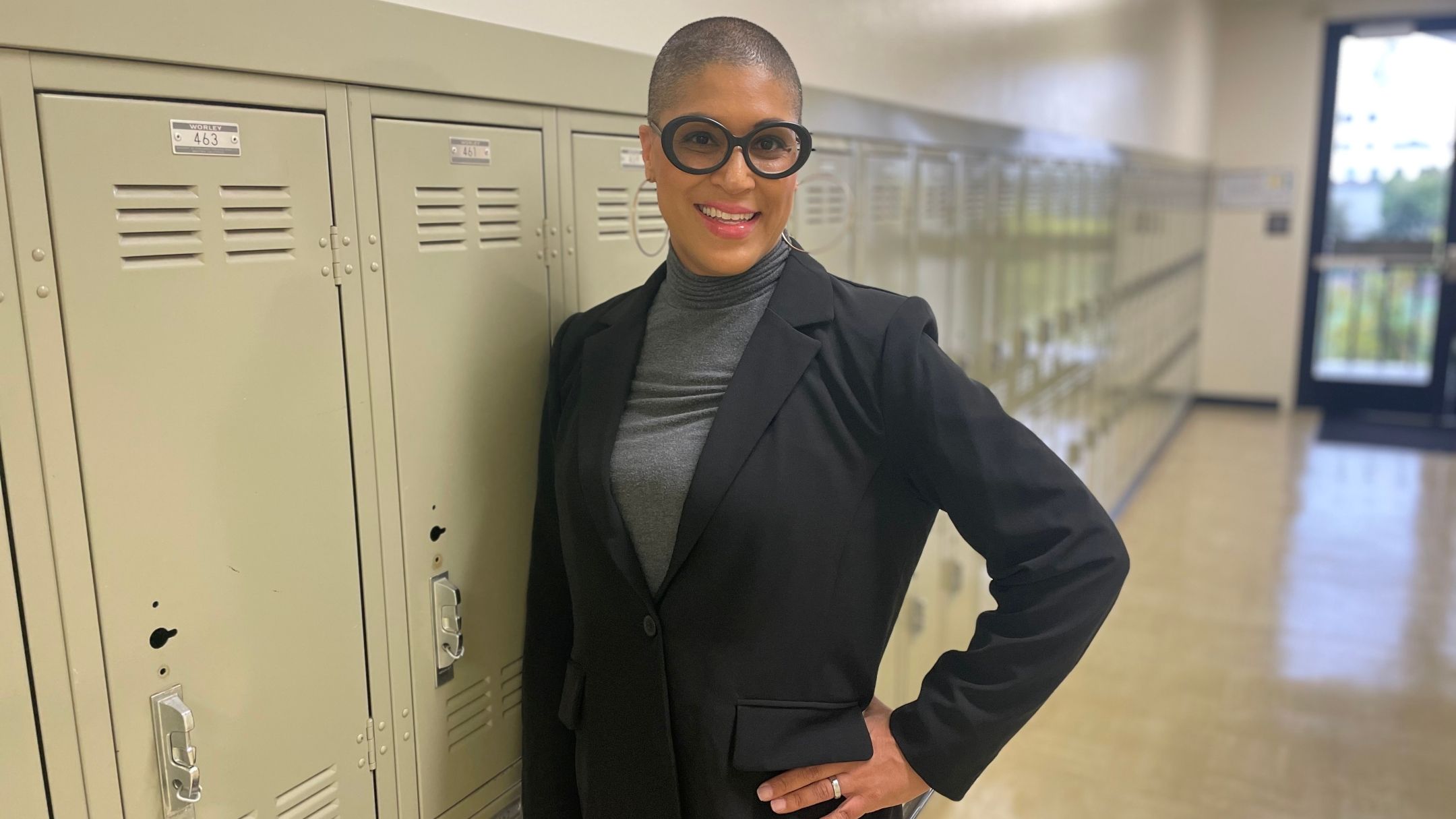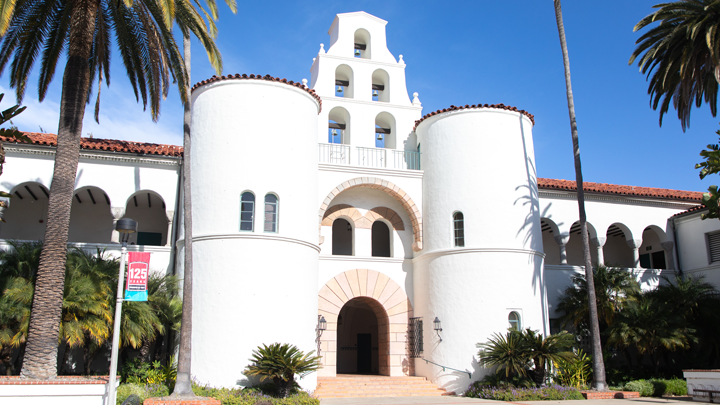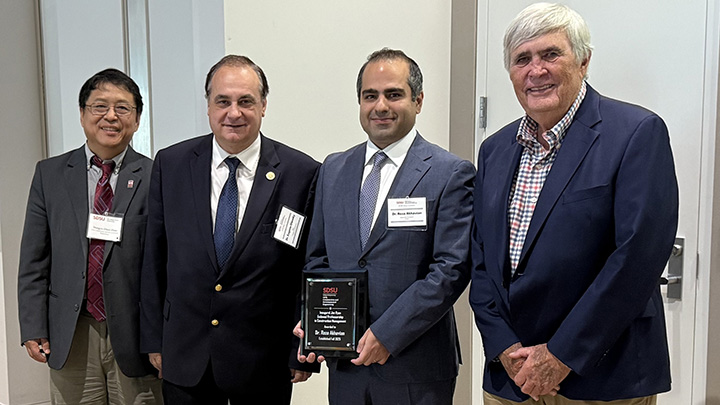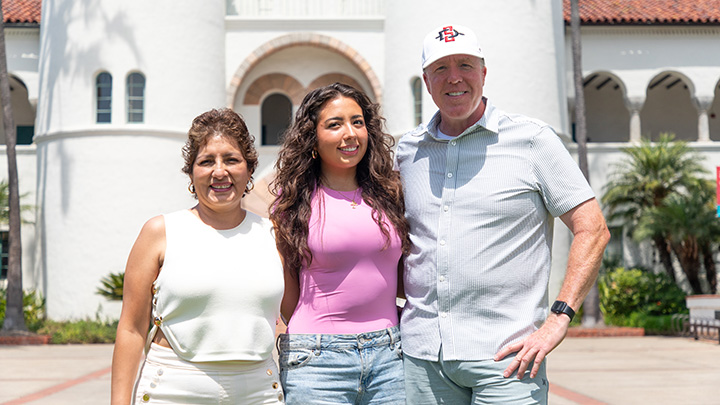The value of students seeing themselves in history
SDSU lecturer and local history teacher Acacia Thede is out to ensure students can explore the past through the perspectives of Black, Indigenous and people of color.

As a first-year college student in her home state of Iowa, Acacia Thede took a U.S. history course that altered her perspective — though perhaps not in the way her instructor intended.
Taught in the typical sequential manner, the class started with learning about Indigenous people before transitioning into westward expansion of the new nation. Native Americans were not mentioned again. Thede took note of the omission.
“I asked my professor, ‘What happened next with Native Americans?’” recalls Thede, now a lecturer in the San Diego State University School of Teacher Education. “His response was, ‘Nothing. We're not going to talk about them anymore.’ That really made me start to question what I actually know about history. I knew there was something more.”
Today, Thede has devoted her career to enlightening students on history that has been largely erased by the dominant narrative.
In addition to teaching advanced methods to future educators at SDSU, Thede teaches U.S. history and geography at the San Diego School of Creative and Performing Arts. This is her second year at the magnet school in the Paradise Hills community and seventh year as a teacher overall, though she has served in an education field for 25 years as a principal and district administrator.
A particular area of passion for Thede is the history that speaks to her own identity: Black history. As we celebrate Black History Month, the SDSU news team sat down with her to discuss the importance of teaching Black history and why students should always be able to see themselves in school curriculum.
Why is it important to teach Black History?
When you think about teaching history, you always want to make sure that your lessons, your lectures and your discussions offer a broader view and also reflect the students who are in front of you. What I tell my 8th grade students — and what I also tell my university students — is that we know that history is typically told from the perspective of the person in power. Because of systemic racism and oppression, you have to really look for the voices of the people whose stories aren't typically told in history. Black history in the United States is really important, because African Americans — either willingly or unwillingly — participated in building the foundation of our country. It's important to understand the true diversity and complexity that is U.S. history.
Is it important for Black students in particular to understand their own history?
In my district and at my school, we have a value of making sure that our students can see themselves in the curriculum. We hear narratives where Black and brown people across the United States are demeaned for nothing other than being who they are. So it's really important for students to be able to have information, tools and resources to not only sort through the information that's out there, but to contribute to the conversation. When students can see themselves, when they can participate and when they can feel that all the parts of their identity are valued, that makes a big difference. It leads to school communities that are safe and welcoming, where kids can show up to campus and just breathe.
Did you see yourself in the curriculum growing up in Iowa?
No. But I always connected with people who looked like me. I had one Black woman teacher and I still keep in touch with her today. My French teacher — she was wonderful. I also had one African American male teacher in elementary school. Whenever they worked with me, I felt like I was understood and I was heard. I think that’s really important. What’s funny is that for my first teaching job, I actually went to a school district that had very, very few Black people — an area intentionally created as a white flight area. This was near the city that I grew up in and, as a student athlete, I had actually been called really demeaning terms going into those communities. And so as a brand new baby teacher who thought she could change the world, I went to that district intentionally to try to be a role model and show folks that Black people weren't who they thought they were. That's where I spent my first five years in teaching.
Wow! How did that go?
It went well! I was able to work with a great team and I built trust with my parents. Part of that is because I was a coach of the cheer team. Coaching helps because you get to meet a lot more people and you interact with families, especially in a small town. I got to know a lot of people.
I wasn't going out there trying to be a martyr or anything, I just wanted to be someone who kids felt cared about them. Somebody who, when they're older, they can look back and say, ‘I had a Black lady teacher, and she was awesome.’ It’s the little things that we do that make humanity better.
How do you weave in different perspectives now as a teacher?
What’s cool about history is there's always more to learn and there are so many different versions of history. I learn something new every time I plan a lesson. I use lots of different resources with my students. We talk about the perspective that we're learning from. For instance when we learn about the expansion of the United States, we learn about what Manifest Destiny is, we analyze images from that time and what was being said — the rationale. But we also look at the Indigenous perspective and the narratives of the people that it impacted. It's very fun. It's something that I wish I had learned earlier in my career.
Interview lightly edited for clarity and length.



